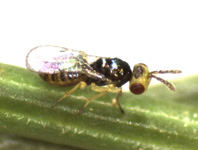Abstract
The morphology and ultrastructure of the antennal sensilla of male Hydrotaea (Hydrotaea) armipes (Fallén) are examined via scanning electron microscopy in order to highlight the importance of antennal sensilla as a source of morphological characters for taxonomy and phylogeny of Hydrotaea. Antennal scape and pedicel have only one type of sensilla, the sharp-tipped chaetic sensilla, whereas antennal funiculus possesses several types of sensilla, including trichoid sensilla, two subtypes of basiconic sensilla, coeloconic sensilla and clavate sensilla. These results are compared with previously published studies on other fly species, especially on H. (H.) irritans (Fallén) and H. (Ophyra) chalcogaster (Wiedemann), and there are possible uniquely derived characters or diagnostic characters examined on antennal pedicel and antennal funiculus, which suggests either affinities and divergence between species at subgenus level. Thus, new morphological evidence is provided, which might help to develop the much disputed taxonomy of genus Hydrotaea Robineau-Desvoidy in future.

